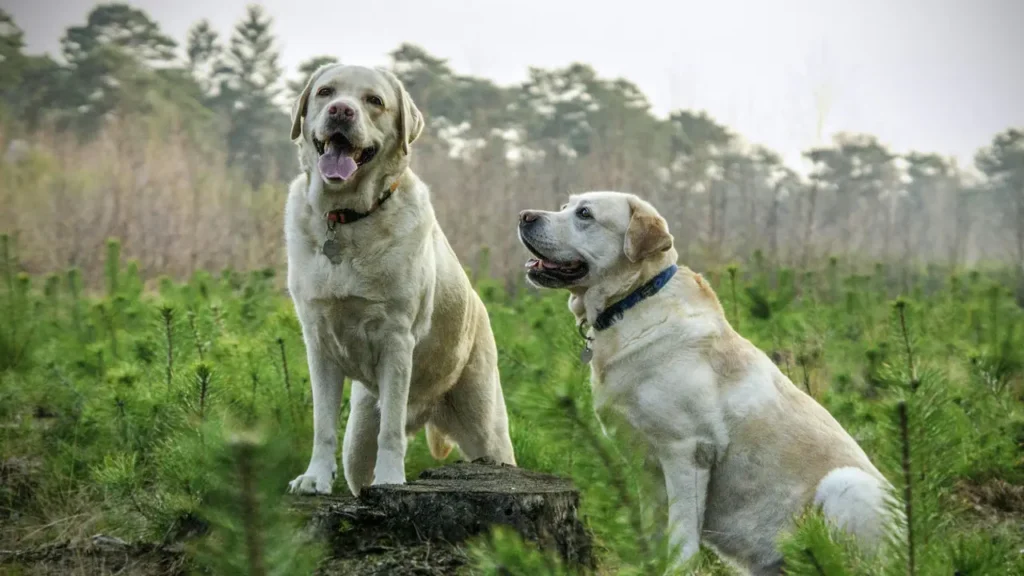The sight of a dog rolling onto their back, paws flopping, and eyes pleading for a belly rub is one of the most heartwarming moments for any pet owner. That blissful wiggle, the rhythmic leg kicks, and the occasional happy grunt signal pure canine joy. But what makes belly rubs so irresistible to dogs? This simple act is a fascinating blend of instinct, biology, emotional connection, and individual personality. Let’s explore the deeper reasons behind this universal doggy delight.
A Sign of Trust and Vulnerability
When a dog exposes their belly, they’re offering far more than a convenient scratching spot. They’re displaying an extraordinary level of trust.
The belly is one of the vulnerable parts of a dog’s body. It has minimal fur and less muscle to shield vital organs like the stomach, liver, and intestines. In the wild, canines rarely show their underside unless they feel completely secure. This leaves them open to attack. When your dog rolls over for you, they’re essentially saying, “I know you won’t hurt me.”
This behavior traces back to canine social dynamics. Puppies roll onto their backs during play or to signal submission or non-aggression. It’s a way of communicating, “I’m not a threat; let’s keep the peace.” Adult dogs carry this instinct forward. They expose belly to express comfort with those they trust. When your dog offers their belly to you, they’re placing you in a position of trust.
For dogs with uncertain pasts, offering the belly might take time. A confident dog feels confident in their environment, while a hesitant dog needs months of gentle encouragement to reach that level of vulnerability. Each belly rub reinforces this trust. This creates a positive feedback loop. They feel safe. Reward them with affection, and they feel even safer next time.
Interestingly, dogs also show their belly to other dogs they trust. However, with humans, the act carries extra weight because it bridges the species gap. This turns a natural instinct into a shared ritual of connection.
It Feels Really, Really Good
Belly rubs are a sensory jackpot for dogs. The skin on a dog’s belly is thinner than on their back or sides. When you scratch this area, you’re activating touch receptors that send waves of pleasure through their nervous system.
The belly’s nerve endings are particularly responsive to light pressure and repetitive motion. Slow, gentle scratches elicit the strongest reactions. These nerves connect to the brain’s pleasure centers. They release dopamine and other feel-good hormones. For many dogs, a belly rub is like hitting an itch they can’t reach themselves. This is intensely satisfying and addictive.
You’ve likely noticed your dog’s leg twitching and kicking during a belly rub. This is the “scratch reflex,” an involuntary response triggered when certain nerves in the skin send a signal to the spinal cord. This signa prompts the leg to move as if to scratch an itch.
This reflex enhances the pleasure of the rub. It engages multiple sensory pathways at once. Some dogs seem to lean into this sensation, kicking harder as if urging you to keep going.
Not all belly rubs are created equal. Dogs often prefer specific styles. Some love a vigorous scratch, while others melt under soft, circular strokes. The belly’s varied texture gives you plenty of room to experiment. Breeds with sparse belly fur find the sensation intense.
Belly rub offers a rare moment of positive stimulation. It’s a break from the constant input of smells, sounds, and sights. This allows them to zero in on a single, delightful feeling. This sensory escape is part of why dogs seem to “zone out” during a good rub, their eyes half-closed and bodies relaxed.
A Bonding Experience with Their Human

Belly rubs serves as a tactile love language. It strengthens your connection with your dog.
Dogs are inherently social creatures. They have evolved to thrive in packs where physical touch reinforces group bonds. When you rub your dog’s belly, you’re stepping into this role. You offer affection that mimics the closeness they’d seek from their canine family.
Physical touch during a belly rub triggers the release of oxytocin, the “love hormone.” Oxytocin fosters feelings of trust, affection, and attachment. Studies on human-dog interactions show that petting a dog can lower stress hormones. This interaction lowers cortisol and boosts oxytocin. Your dog’s wagging tail and relaxed posture are their way of saying they feel just as connected to you as you do to them.
Belly rubs also give your dog something they crave: your undivided attention. Those few minutes of scratching are a gift to your dog. They thrive on being the center of your world.
The beauty of belly rubs lies in their reciprocity. Your dog enjoys the physical and emotional warmth, while you get the satisfaction of their obvious delight. This back-and-forth creates a cycle of affection. It deepens your relationship over time.
Interestingly, belly rubs echo forms of affection in human relationships, like hugging or holding hands. Just as we use touch to express care, dogs interpret belly rubs as a sign of love and security. This cross-species understanding is part of what makes the human-dog bond so unique—no words needed, just a hand and a happy belly.
A Stress-Relieving Escape
Belly rubs aren’t just fun—they’re a natural stress buster for dogs. The gentle pressure and rhythmic motion of petting have a calming effect. This physical touch helps regulate a dog’s nervous system. This lowers their heart rate and eases tension in their muscles.
By rubbing your dog’s belly, you’re activating the parasympathetic nervous system. This is helpful for dogs who’ve had a stimulating day. The repetitive nature of a belly rub acts like a meditative anchor. This brings their focus to the present moment and away from stressors.
The pleasure of a belly rub also triggers the release of endorphins. It is the brain’s natural painkillers and mood enhancers. These chemicals create a sense of euphoria and calm. This helps your dog feel balanced and content. A belly rub can be a go-to tool for soothing them.
Belly rubs can serve as a practical calming technique in specific situations. For example, after a high-energy walk or play session, a belly rub helps your dog transition from excitement to rest. During stressful events like fireworks or car rides, a few minutes of belly rubbing can distract and comfort your dog. At night, a gentle rub can signal it’s time to settle down. This helps your dog relax into sleep.
An Instinctual Throwback to Puppyhood
The love for belly rubs has roots in a dog’s earliest days. Newborn puppies rely on their mother’s grooming to stay clean, and feel secure. This grooming frequently includes licking their bellies, a gentle touch that provides both physical care and emotional comfort. As adults, dogs associate belly rubs with these primal memories. This evokes a sense of safety and nurturing.
A dog’s puppyhood can influence their reaction to belly rubs. Those raised in loving, hands-on environments may seek out belly scratches as adults, while dogs from traumatic backgrounds might be more hesitant. For rescue dogs, learning to enjoy belly rubs can be a milestone.
This act mimics the soothing touch of their mother. It offers a chance to reclaim that sense of security. Over time, a cautious dog may go from tolerating a quick pat to eagerly rolling over. This is a sign they’re rewriting their emotional script with your help.
A Way to Communicate and Play
Belly rubs are more than a passive experience for dogs. They’re a form of active communication. When a dog rolls over, they’re not just submitting to a scratch; they’re initiating a dialogue. This invitation comes with playful cues: a wagging tail, a relaxed mouth, or a mischievous nudge to keep your hand moving. For many dogs, a belly rub is a springboard to play.
Dogs use body language to “talk” to us. Rolling over is a clear request for engagement. It’s their way of saying, “Hey, let’s do something fun!” Some dogs escalate the playfulness during a belly rub, pawing at your hand, wriggling side to side, and letting out happy barks. This back-and-forth feels like a game.
A belly rub mimics this social exchange. This lets your dog express their desire for connection. For outgoing dogs, it’s a chance to shine, while for quieter ones, it’s a low-stakes way to interact without feeling pressured.
The meaning behind a belly roll can vary. In a relaxed setting, it’s likely a bid for affection. During high-energy play, it might signal, “Keep the fun going!” Some dogs use belly exposure strategically. They roll over to pause a rough game or redirect attention to something gentler. Learning to read these nuances deepens your understanding of your dog’s personality.
The playful nature of belly rubs reinforces the idea that you’re not just their caregiver but their playmate. It’s a reminder that dogs don’t just want food and shelter—they want joy.
Individual Personality Plays a Role
Just as humans have unique preferences for affection, dogs vary in their love for belly rubs. It depends on personality, breed, and life experiences. Understanding these differences helps explain why one dog might demand endless scratches while another prefers a quick pat before moving on.
Bold pups, like Labradors or Golden Retrievers, flop over for anyone. They see belly rubs as a chance to soak up attention. Their outgoing nature makes vulnerability feel natural.
Timid dogs only show their belly to trusted humans after months of bonding. For them, a belly rub is a big step, reflecting hard-earned trust. High energy breeds treat belly rubs as part of play, squirming and pawing rather than lying still. They enjoy the interaction but may not linger long.
Basset Hounds and Newfoundlands savor slow, leisurely rubs, content to bask in the moment without much fuss.
A dog’s physical makeup influence their belly rub enthusiasm. Breeds with thin coats or hairless bellies find the sensation pronounced due to less fur blocking the skin. Conversely, double-coated breeds need a firmer touch to feel the rub through their fur. Some dogs with sensitive skin might find belly touching uncomfortable.
Puppies and younger dogs tend to be more playful during belly rubs, while older dogs might prefer slower, gentler strokes to soothe achy joints. A dog’s daily mood matters, too. A tired pup melts into a rub, while an overstimulated one might see it as a chance to wrestle. Tuning into these cues ensures the experience is tailored to their needs.
Why Some Dogs Don’t Love Belly Rubs
While belly rubs are a hit for many dogs, not every pup is a fan. Recognizing and respecting these preferences is key to a healthy relationship.
Dogs who’ve experienced rough handling, abuse, and medical procedures involving their belly (like surgeries) may associate touch there with pain or fear. A rescue dog might flinch at first. They need time to relearn that touch can be positive.
Skin conditions, allergies, and digestive sensitivity make belly rubs unpleasant. If your dog suddenly dislikes them, it’s worth checking with a vet to rule out health problems. Some dogs simply prefer other forms of affection, like ear scratches, chin rubs, or just sitting close by.
Belly rubs are more than a quirky dog habit. They’re a gateway to understanding your pup’s emotions. Each roll-over reveals their trust. It’s a moment where biology meets bonding.




